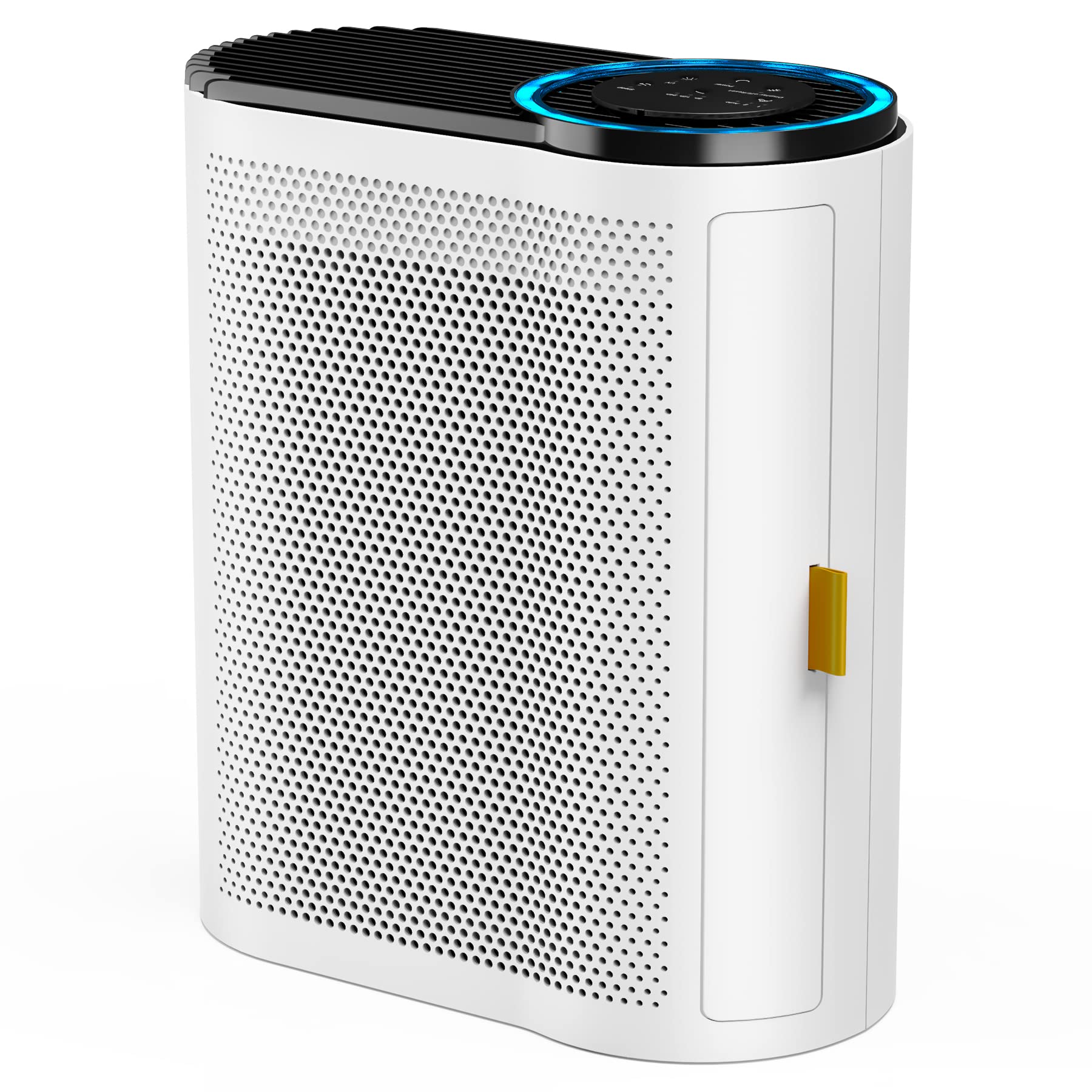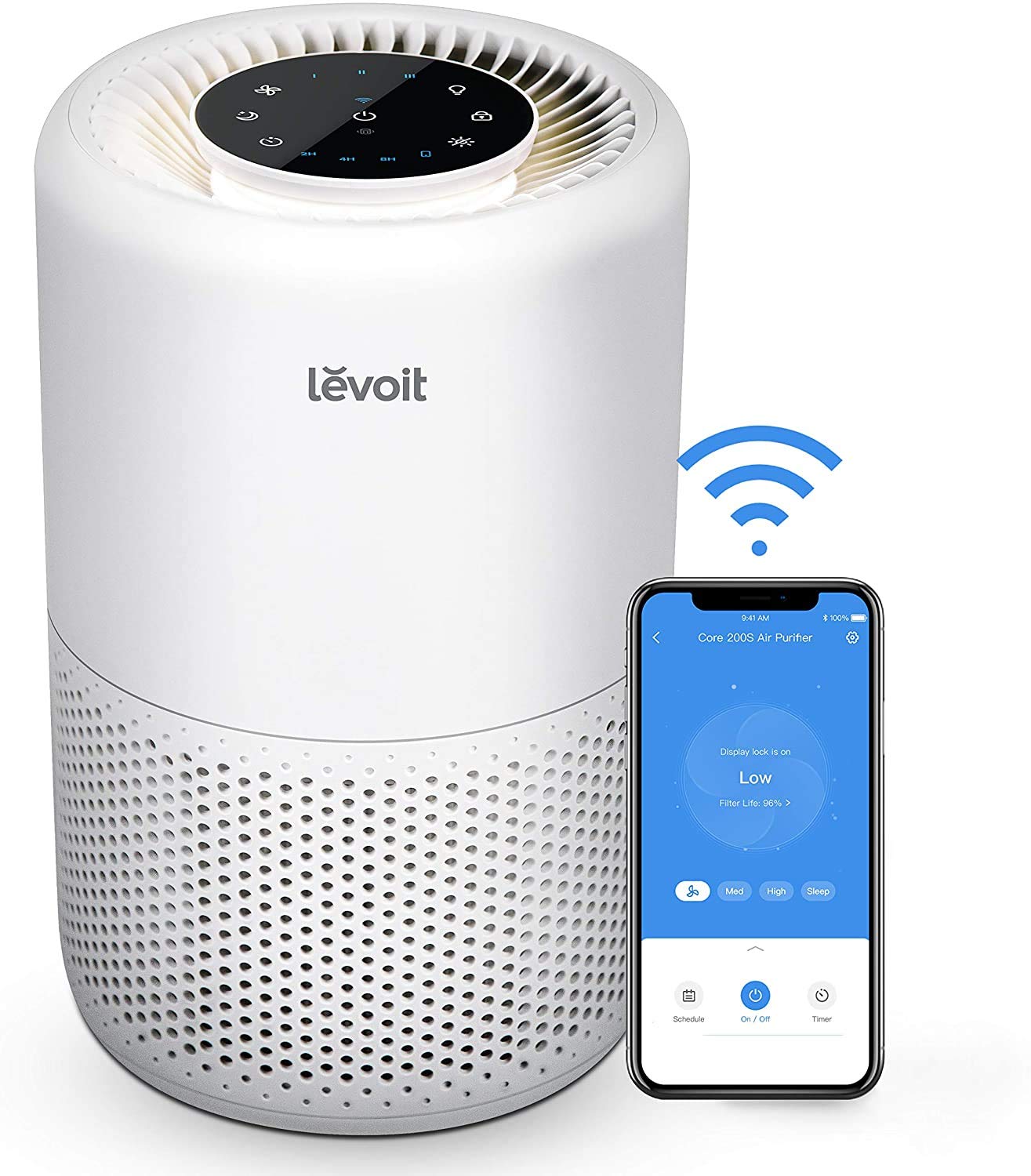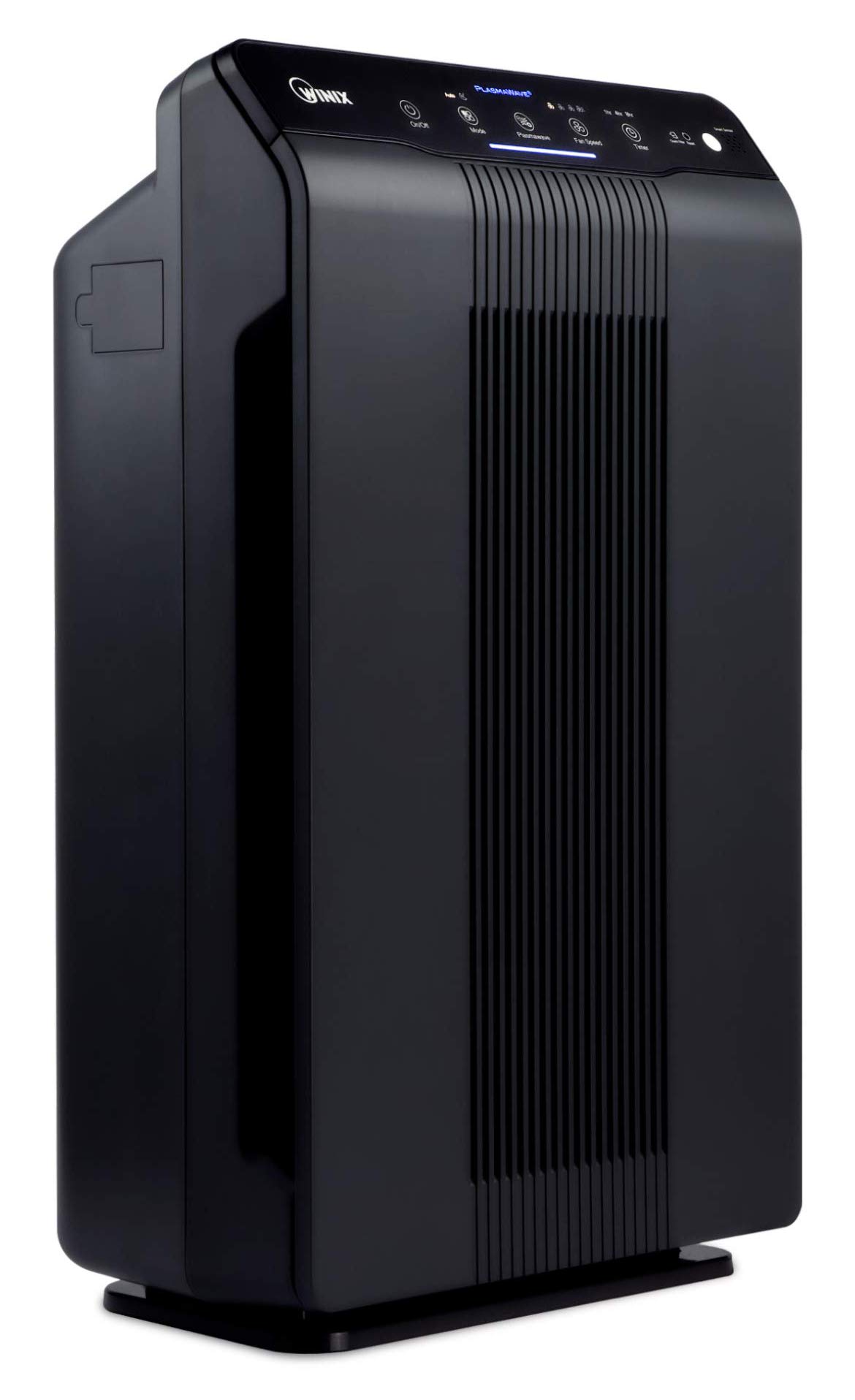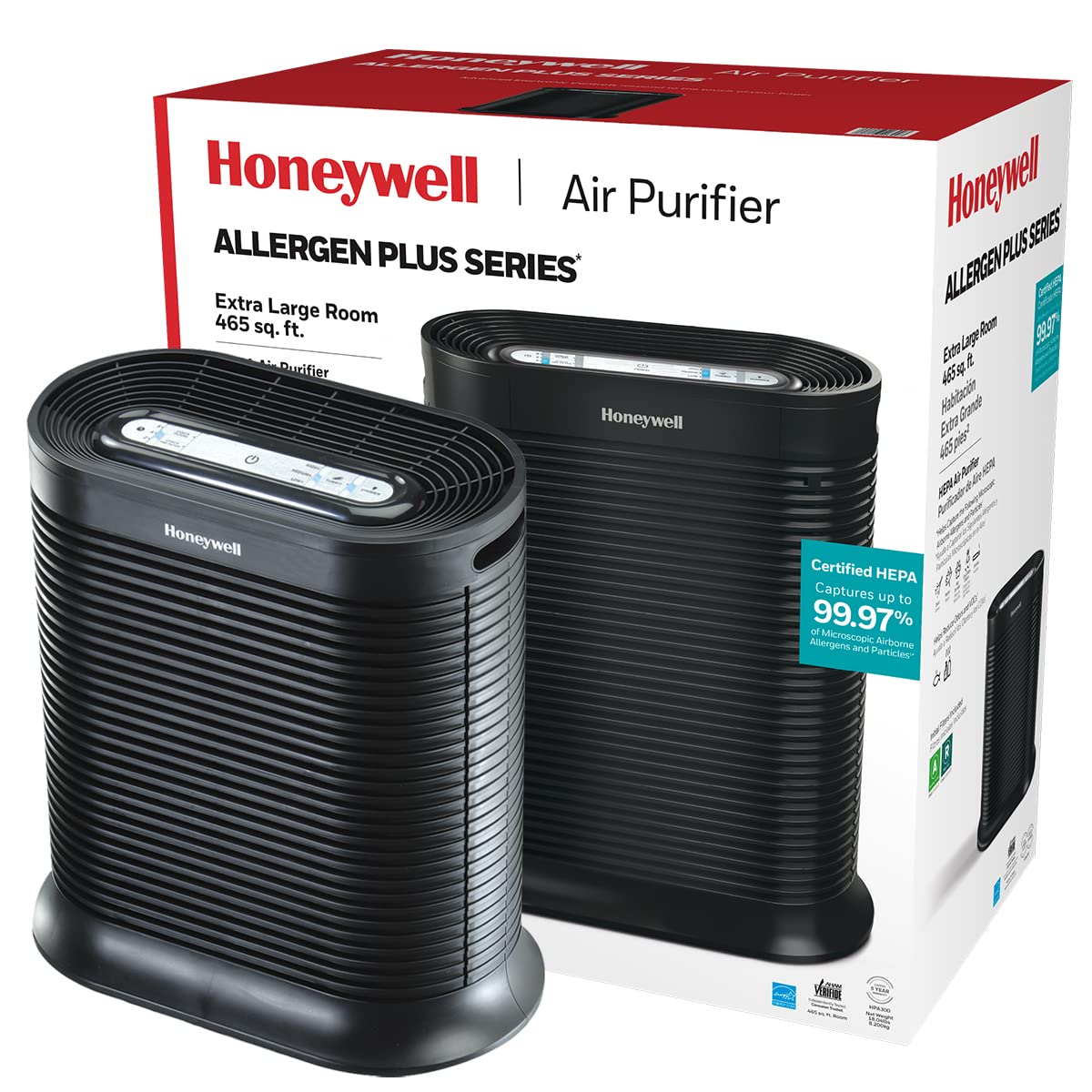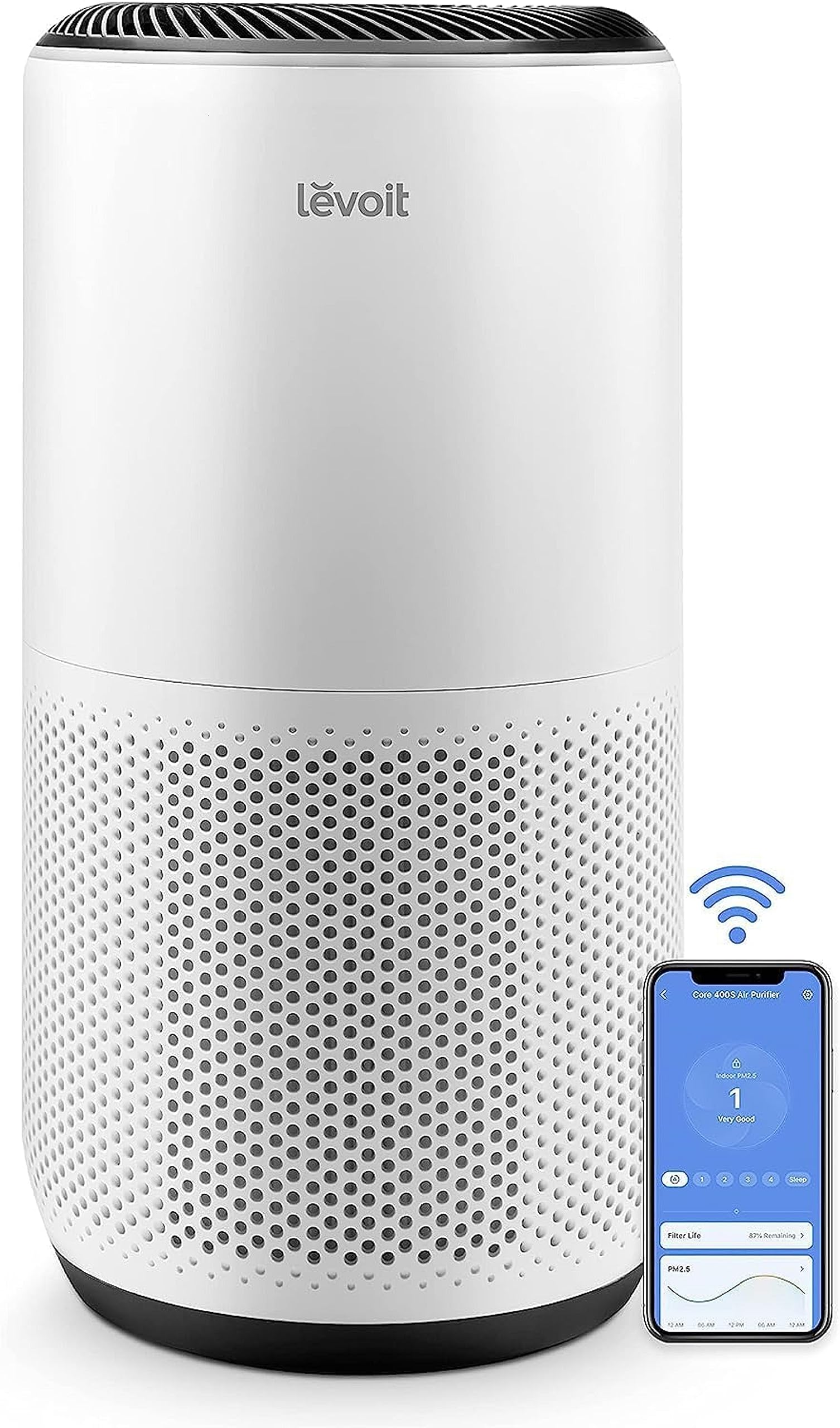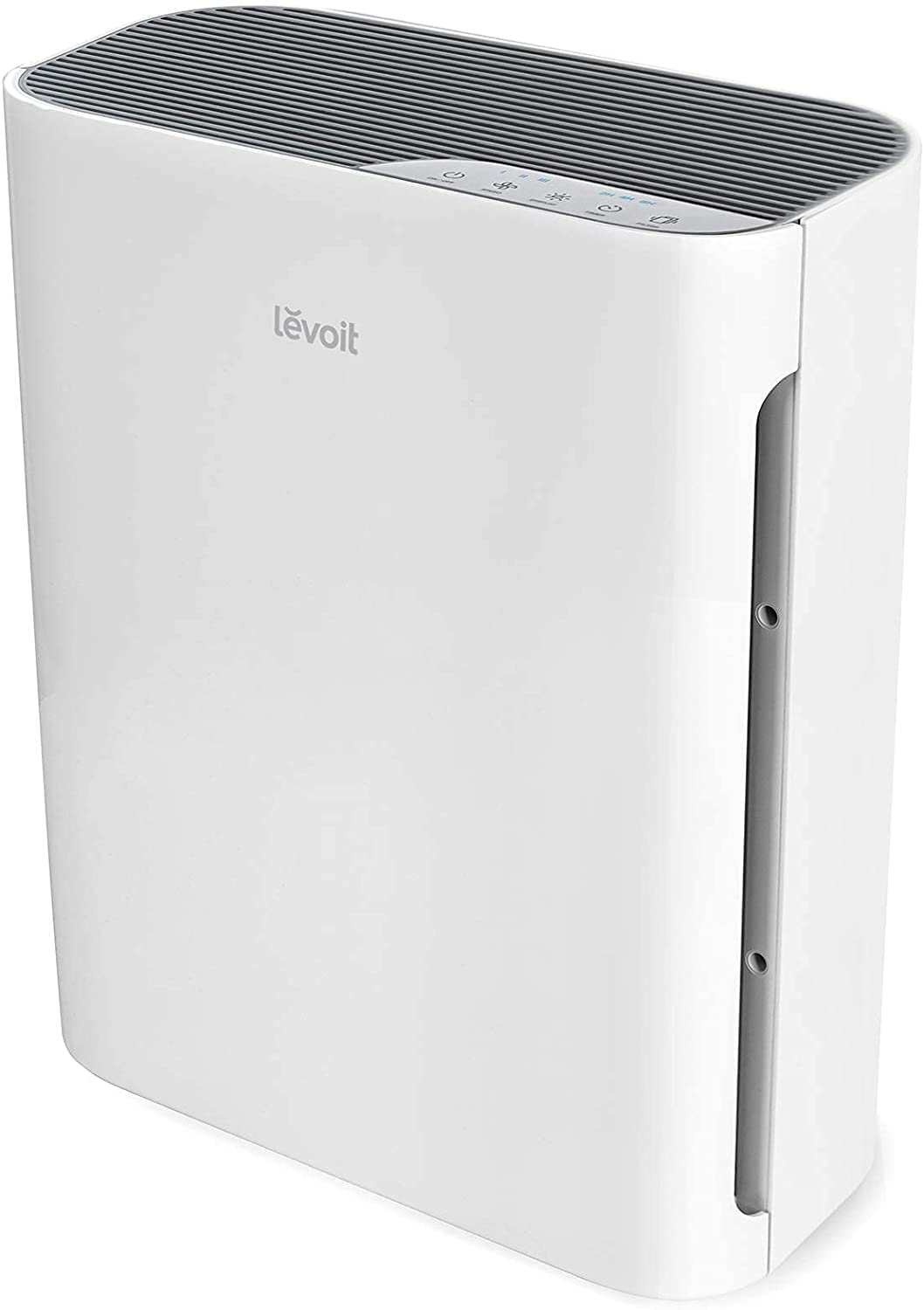FAQs - Advanced Queries
How to Build an Air Purifier
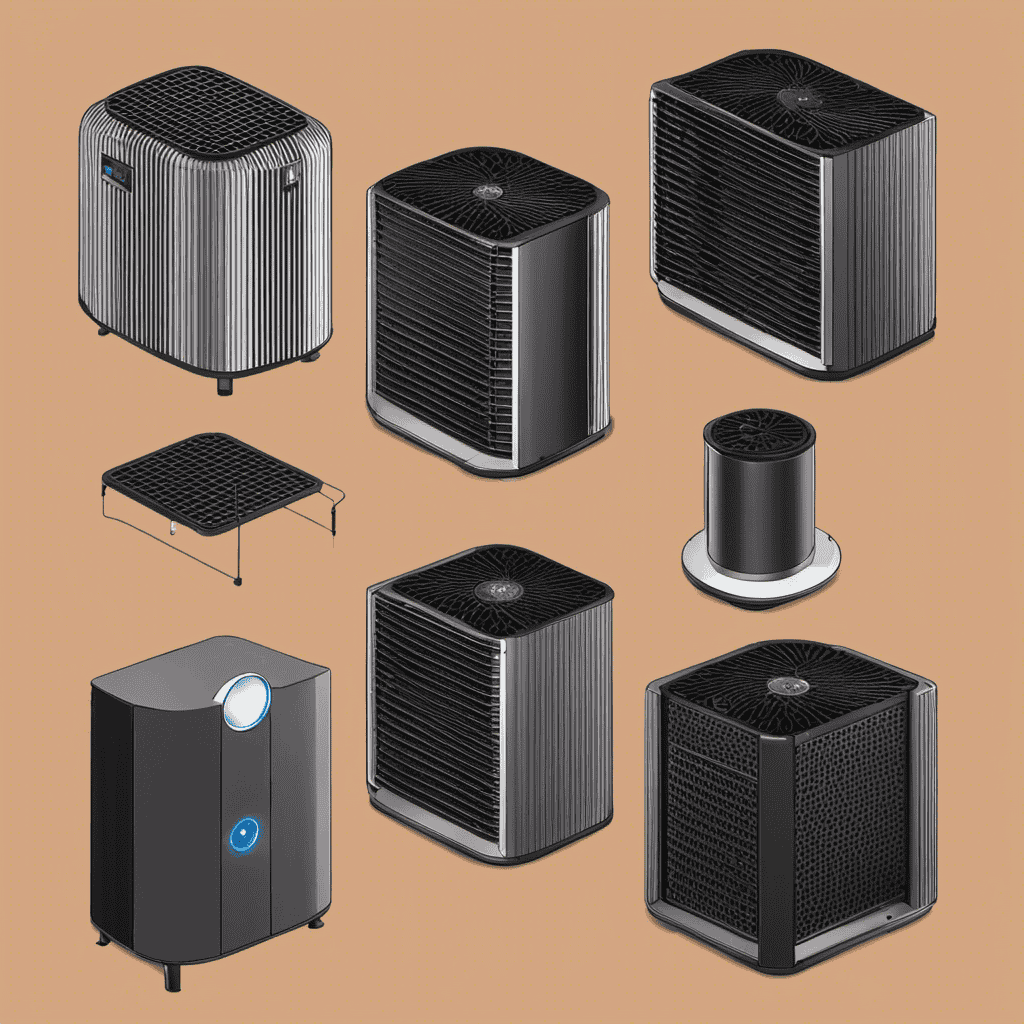
I have always been worried about the air quality in my home, which is why I took it upon myself to build an air purifier.
In this article, I’ll guide you through the step-by-step process of creating your own air purifier using readily available materials and tools.
By the end, you’ll have a custom-made device that will help improve the air quality in your living space.
Let’s get started!
Key Takeaways
- Optimal filter size and high MERV rating are crucial for effective air purification.
- Different filtering methods like HEPA filters, activated carbon filters, and ionizers can be used.
- Regular maintenance and cleaning are important for maximizing air purification benefits.
- Proper installation and secure attachment of the filter ensure effective filtration and improved indoor air quality.
Choosing the Right Materials
When building an air purifier, it’s important to choose the right materials. The optimal filter size is crucial for ensuring effective air purification. For a DIY air purifier, selecting the appropriate filter size is essential to maintain optimal airflow and filtration efficiency.
The filter should be large enough to capture a wide range of airborne particles, including dust, pollen, and pet dander. Additionally, it should have a high MERV (Minimum Efficiency Reporting Value) rating to effectively remove contaminants from the air. By using the right filter size, you can ensure that your DIY air purifier efficiently cleans the air in your space.
Understanding the importance of materials in air purification leads us to the next section, where we explore air purification technology in more detail.
Understanding Air Purification Technology
To understand how air purification technology works, you need to familiarize yourself with the different filtering methods. Air purifiers are designed to remove pollutants and improve indoor air quality.
There are several types of filters commonly used in air purifiers, including HEPA filters, activated carbon filters, and ionizers. HEPA filters are highly effective at capturing particles as small as 0.3 microns, while activated carbon filters are great for removing odors and chemicals. Ionizers work by releasing negatively charged ions that attach to airborne particles, causing them to fall out of the air.
When choosing an air purifier, it’s important to consider the size of the room and the specific air quality indicators you want to target. Understanding the different filtering methods will help you select the most effective air purifier for your needs.
Now, let’s move on to gathering the necessary tools for building your own air purifier.
Gathering the Necessary Tools
First, make sure you have all the necessary tools for assembling your own air purification system. It’s important to have the right equipment to ensure a successful and efficient build. Here are three essential tools you’ll need:
-
Screwdriver: You’ll need a screwdriver to secure the different components of the air purifier together. Make sure you have a variety of screwdriver sizes to accommodate different screws.
-
Wire cutters: Wire cutters are necessary for cutting and stripping wires during the assembly process. They’ll help you connect the various electrical components of the air purifier.
-
Pliers: Pliers are useful for gripping and manipulating small parts. They can come in handy when attaching filters or adjusting components.
By having these tools readily available, you can ensure a smooth assembly process for your air purification system.
Regular maintenance and cleaning will also help maximize the air purification benefits and keep your air purifier running efficiently.
Building the Air Filter Housing
Make sure you have all the necessary components before assembling the filter housing for your DIY air purification system. The first step is choosing the right filter material. The effectiveness of your air purifier largely depends on the filter material you select. Look for filters that can trap small particles like dust, pollen, and pet dander.
Once you have the filter material, it’s time to secure it in the housing. Start by placing the filter in the housing and making sure it fits snugly. Then, use the provided clips or screws to secure the filter in place. This will prevent any air leaks and ensure that all the air passing through the housing is properly filtered.
Now that the filter is securely in the housing, let’s move on to installing the air filter.
Installing the Air Filter
Once the filter is secured in the housing, you’ll need to locate the designated slot for installing the air filter. This step is crucial for ensuring proper airflow and filtration in your air purifier.
Here are some air filter installation tips and troubleshooting techniques to help you along the way:
- Make sure the filter is oriented correctly, with the airflow arrow pointing towards the fan.
- Gently slide the filter into the slot, ensuring a snug fit without forcing it.
- Double-check that the filter is securely in place before closing the housing.
Proper installation of the air filter is essential for the effective functioning of your air purifier. It ensures that the air passing through the system is properly filtered, removing contaminants and improving indoor air quality.
Now that the air filter is installed, let’s move on to wiring the fan and power supply.
Wiring the Fan and Power Supply
When it comes to wiring the fan and power supply in your air purifier, there are a few key tips to keep in mind.
First, make sure to properly connect the fan wires to the power supply, ensuring a secure and reliable connection.
Additionally, it is important to double-check the polarity of the power supply connections to avoid any potential damage or malfunctions.
Fan Wiring Tips
One important tip for fan wiring is to ensure that all the connections are secure. Loose connections can lead to poor performance and even potential hazards.
When it comes to fan maintenance and noise reduction techniques, here are three key things to keep in mind:
-
Use rubber grommets or vibration isolators: These help to minimize vibrations and reduce noise caused by the fan’s operation. By isolating the fan from the mounting surface, you can significantly decrease the overall noise level.
-
Check and clean the fan blades regularly: Over time, dust and debris can accumulate on the fan blades, causing imbalance and noise. Regularly inspect and clean the blades to ensure optimal performance and noise reduction.
-
Lubricate the fan motor: Proper lubrication of the fan motor can help reduce friction and noise. Refer to the manufacturer’s guidelines for the appropriate type and amount of lubricant to use.
Power Supply Connections
Make sure you securely connect the power supply to prevent any potential hazards. Power supply safety is crucial when building any electronic device, including an air purifier.
The first step is to ensure that the power supply you are using is compatible with the device’s requirements. Check the voltage and current ratings of the power supply and compare them with the specifications of your air purifier. It is essential to match these values to avoid overloading the components or causing damage.
Once you have confirmed compatibility, connect the power supply to the appropriate input terminals on your air purifier. Double-check the connections to make sure they are secure and tight.
Always follow the manufacturer’s instructions and guidelines to ensure proper power supply installation and minimize the risk of electrical accidents.
Adding the Control Panel
To add the control panel, you’ll need to attach the buttons and connect the wires correctly. The control panel is an essential component of the air purifier design as it allows users to adjust settings and monitor the device’s performance.
Here are three important steps to follow:
-
Attach the buttons: Carefully position the buttons on the control panel according to your preferred layout. Ensure they are securely fastened using screws or adhesive.
-
Connect the wires: Identify the appropriate terminals on the control panel and match them with the corresponding wires from the air purifier’s circuit board. Use connectors or soldering to establish a secure connection.
-
Test the functionality: Before closing the air purifier’s casing, test the control panel’s functionality. Make sure each button responds correctly and that the LED indicators light up as intended.
Following these steps will ensure that the control panel is properly integrated into your air purifier, allowing for easy and convenient operation.
Testing the Air Purifier
Now that the control panel of the air purifier is successfully installed, it’s time to test the effectiveness of the device.
Air quality monitoring is a crucial step in ensuring that the air purifier is working efficiently. To perform this test, I will use a specialized air quality monitor.
Placing the monitor in the room, I will activate the air purifier and let it run for a specific period. During this time, the monitor will measure various air pollutants such as particulate matter and volatile organic compounds (VOCs).
After the test period, I will analyze the data obtained from the monitor to evaluate the filter effectiveness of the air purifier. This analysis will provide valuable insights into the device’s ability to remove harmful particles and improve indoor air quality.
Enhancing Air Purification Efficiency
When it comes to enhancing air purification efficiency, two key factors to consider are optimal filter selection and air circulation techniques.
The choice of filters plays a crucial role in capturing and removing pollutants from the air, so it’s important to select filters that are designed to effectively trap specific contaminants.
Additionally, implementing proper air circulation techniques helps ensure that purified air is distributed evenly throughout the space, maximizing the effectiveness of the air purifier.
Optimal Filter Selection
Choosing the right filters is crucial for creating an effective air purifier. When selecting filters, it’s important to compare their efficiency to ensure optimal air purification. Here are three key factors to consider:
-
Filter Type: Different filters target specific pollutants, such as HEPA filters for allergens and activated carbon filters for odors and chemicals. Understanding your specific needs will help you choose the appropriate filter type.
-
Filter Efficiency: Look for filters with high efficiency ratings, indicated by their MERV (Minimum Efficiency Reporting Value) or CADR (Clean Air Delivery Rate). Higher ratings mean the filter can capture smaller particles and provide better air purification.
-
Filter Lifespan: Consider the lifespan of the filters and how often they need to be replaced. This will help you estimate the long-term cost and maintenance requirements of your air purifier.
By carefully selecting filters based on type, efficiency, and lifespan, you can ensure that your air purifier effectively removes pollutants from your indoor environment.
Now, let’s explore the next important aspect: air circulation techniques.
Air Circulation Techniques
To ensure proper circulation of clean air in your space, consider utilizing various techniques.
-
Adjust fan speeds: By adjusting the fan speeds, you can control the flow of air in the room. This ensures that the air is effectively circulated and pollutants are removed.
-
Strategically place the air purifier: Placing the air purifier in an optimal location can enhance its effectiveness in cleaning the air. Consider placing it near a source of pollutants or in a central area.
Proper air circulation is crucial for improving indoor air quality and reaping its benefits. These techniques work together to create a healthier indoor environment by removing airborne pollutants and refreshing the air.
Now, let’s move on to the next section and explore maintenance and cleaning tips for your air purifier.
Maintenance and Cleaning Tips
Make sure you regularly clean the filters of your air purifier to maintain its effectiveness. Proper cleaning techniques and filter maintenance are crucial for the optimal functioning of your device. Here are some tips to help you keep your air purifier in top condition:
-
Vacuum the pre-filter: This removes larger particles such as dust and pet hair, preventing them from clogging the main filter.
-
Wash or replace the HEPA filter: Depending on the model, you may be able to wash the filter or need to replace it. Follow the manufacturer’s instructions for the best results.
-
Clean the activated carbon filter: Gently vacuum or wipe the surface to remove any accumulated dirt and debris.
Troubleshooting and Common Issues
When it comes to troubleshooting and common issues with air purifiers, there are three key points to consider: filter replacement frequency, strange odors or smells, and power supply issues.
First, it is important to understand the recommended filter replacement frequency for your specific air purifier model. This will ensure optimal performance and maintain clean air quality in your space.
Next, if you notice any strange odors or smells coming from your air purifier, it may be a sign that the filters need to be replaced or that there is a buildup of contaminants.
Filter Replacement Frequency
You should regularly check your air purifier’s filter to ensure it is not clogged or dirty. Keeping the filter clean is crucial for maintaining the effectiveness of your air purifier.
Here are some filter replacement tips to help prolong the lifespan of your filter:
-
Vacuum the filter: Use a vacuum cleaner with a brush attachment to remove any dust or debris from the filter. This will help extend its lifespan.
-
Wash the filter: Some filters are washable, so follow the manufacturer’s instructions to clean them properly. Make sure the filter is completely dry before reinstalling it.
-
Use a pre-filter: Consider using a pre-filter to capture larger particles and prevent them from reaching the main filter. This can help reduce the frequency of filter replacements.
Strange Odors or Smells
In my previous discussion about filter replacement frequency, I emphasized the importance of maintaining a clean and efficient air purifier. Now, let’s dive into a common concern: strange odors or smells. Whether it’s the lingering scent of your furry friend or the remnants of a smoky environment, eliminating pet odors and removing smoke smells can be a challenge. Luckily, with the right approach and a well-designed air purifier, these odors can be effectively neutralized. Take a look at the table below, which showcases some effective techniques for combating these specific smells:
| Technique | Description |
|---|---|
| Activated Carbon Filters | Absorb and trap pet odors and smoke smells through a highly porous surface. |
| Ozone Generators | Release ozone molecules to neutralize odors at a molecular level. |
| Ionizers | Emit negatively charged ions to bond with odor-causing particles, eliminating smells. |
Power Supply Issues
If the strange odors persist, it’s possible that power supply issues may be affecting the effectiveness of the air purifier. The power supply is a critical component of the air purifier, providing the necessary electrical energy for it to function properly.
To ensure power supply safety and troubleshoot any issues, follow these steps:
- Check the power cord for any visible damage or loose connections.
- Test the power outlet by plugging in another device to see if it works.
- If the air purifier has a power switch, make sure it is in the ‘on’ position.
By addressing power supply issues, you can improve the performance and reliability of your air purifier.
Remember to exercise caution when handling electrical components and always prioritize power supply safety. If you are unsure about any troubleshooting steps, consult the manufacturer’s manual or seek professional assistance.
Frequently Asked Questions
What Are the Potential Health Benefits of Using an Air Purifier?
Using an air purifier can potentially provide health benefits by reducing indoor air pollutants, such as allergens, smoke, and mold spores. It can also be cost-effective in the long run by improving respiratory health and reducing potential risks.
How Long Does It Typically Take to Build an Air Purifier?
Building an air purifier can take varying amounts of time depending on the complexity of the design and the availability of components. Potential challenges and factors to consider include cost, efficiency, and compatibility with existing systems.
Can I Customize the Design of the Air Filter Housing?
Yes, you can customize the design of the air filter housing. This allows you to tailor the air purifier to your specific needs and preferences, ensuring optimal performance and aesthetic appeal.
Is It Possible to Use Alternative Power Sources for the Fan and Power Supply?
Yes, it is possible to use alternative power sources such as solar energy or battery power for the fan and power supply. This allows for greater flexibility and sustainability in the operation of the air purifier.
Are There Any Specific Cleaning Products or Methods Recommended for Maintaining the Air Purifier?
For the air purifier’s maintenance, it is crucial to use suitable cleaning products and methods. Regularly clean the filters with a mild detergent solution and ensure proper drying. Follow the manufacturer’s instructions for optimal maintenance.
Can I Use the DIY Air Purifier Method to Achieve the Same Results as a Store-Bought Air Purifier?
Yes, you can purify air without air purifier using the DIY method. By using household items like baking soda, vinegar, and essential oils, you can effectively improve indoor air quality. While store-bought air purifiers provide convenience, the DIY method can achieve similar results at a lower cost.
Conclusion
After successfully building my own air purifier, I must say, the irony is palpable. Who would have thought that in this modern age of convenience, I would resort to constructing my own device to clean the air I breathe?
But alas, it seems that the air quality has declined to such an extent that we must take matters into our own hands. With the right materials and understanding of air purification technology, anyone can create their own little haven of clean air.
Happy building!
FAQs - Advanced Queries
Why Should I Leave the Room When Air Purifier Iso N

I cannot emphasize how crucial it is to leave the room while using an air purifier with ozone in it. The risks of staying in the room are serious and should not be ignored. If you care about your health, it’s best to stay away from the room when the purifier is on. Trust me, your well-being is worth it.
In this article, we will delve into the understanding of air purifier iso N, the benefits of creating a safe environment, and how to maximize its effectiveness. By following these guidelines, we can ensure the health and well-being of all occupants.
So let’s dive in and discover why stepping out of the room is crucial in this scenario.
Key Takeaways
- Leaving the room when using an air purifier is crucial for avoiding exposure to harmful particles.
- Air purifiers can release byproducts like ozone or small amounts of carbon dioxide.
- Inhaling byproducts can be harmful to health.
- Lack of ventilation in a closed room can lead to the accumulation of indoor pollutants.
The Importance of Leaving the Room
You should definitely leave the room when the air purifier is on. This is crucial for avoiding exposure to harmful particles and ensuring clean air in your environment.
Air purifiers work by filtering out pollutants, such as dust, pollen, pet dander, and even harmful gases like volatile organic compounds (VOCs). However, during this process, the air purifier can release some byproducts, such as ozone or small amounts of carbon dioxide.
While these levels are generally safe, it is still advisable to leave the room to minimize any potential risks. By doing so, you can ensure that you are not inhaling any byproducts and that the air purifier can effectively clean the air without hindrance.
Understanding air purifier ISO n will further enhance your knowledge on this topic.
Understanding Air Purifier Iso N
Understanding how air purifiers can affect the air quality in a room is important. Air purification techniques play a crucial role in maintaining clean and healthy indoor environments.
These techniques involve the use of air purifiers, which help to remove contaminants such as dust, allergens, and pollutants from the air. By trapping these particles, air purifiers can significantly improve air quality and reduce the risk of respiratory issues.
Air pollution control measures are essential to create a safe living space, especially in areas with high levels of pollution. Air purifiers with iso n technology are particularly effective as they neutralize harmful substances in the air, including viruses and bacteria.
Potential Risks of Staying in the Room
Staying in a room for extended periods can increase the risk of exposure to harmful airborne particles. It’s important to understand the potential risks associated with staying in a room for too long, especially when using an air purifier. Here are some key points to consider:
-
Lack of ventilation: When staying in a closed room for a long time, the lack of fresh air circulation can lead to the accumulation of indoor pollutants.
-
Inadequate filtration: Not all air purifiers are created equal. Some may not effectively capture smaller particles or certain types of pollutants, leaving them in the air.
-
Contaminant re-release: Air purifiers can inadvertently release trapped pollutants back into the room, especially if the filter is not regularly cleaned or replaced.
-
Mold and bacteria growth: Staying in a humid room with poor air circulation can create an environment conducive to the growth of mold and bacteria, which can pose health risks.
To minimize these risks, it’s recommended to regularly open windows for fresh air exchange, maintain proper air purifier maintenance, and ensure adequate ventilation in the room.
Benefits of Creating a Safe Environment
Creating a safe environment can help promote overall well-being and reduce the risk of exposure to potential hazards. By implementing healthy habits and taking precautions, we can significantly reduce respiratory problems and improve our quality of life. Here is a table that highlights the benefits of creating a safe environment:
| Benefits of Creating a Safe Environment |
|---|
| Reduces respiratory problems |
| Enhances overall well-being |
| Minimizes exposure to hazards |
Maximizing the Effectiveness of Air Purifier Iso N
Maximizing the effectiveness of an air purifier is essential for improving indoor air quality and reducing respiratory issues. To achieve this, here are some key strategies:
- Regularly clean and replace air filters to ensure optimal performance.
- Place the air purifier in a central location to improve air circulation throughout the room.
- Use the air purifier on high settings during times when airborne pollutants are most prevalent, such as during cooking or cleaning.
- Consider using additional methods, such as opening windows or using fans, to further enhance air circulation and filtration.
By implementing these practices, you can significantly improve the efficiency of your air purifier in reducing airborne pollutants and promoting healthier indoor air quality.
This is crucial for ensuring the health and well-being of occupants, as clean air is vital for respiratory health and overall wellness.
Ensuring the Health and Well-being of Occupants
When it comes to ensuring the health and well-being of occupants, air purifiers play a crucial role.
These devices offer a range of benefits that contribute to improving indoor air quality.
Air Purifier Benefits
Using an air purifier can greatly improve the air quality in your room. Air purifier technology has advanced significantly in recent years, offering various air purification techniques to effectively remove harmful pollutants from the air.
Here are some key benefits of using an air purifier:
-
Reduces allergens: Air purifiers can capture and eliminate common allergens like dust mites, pet dander, and pollen, providing relief for allergy sufferers.
-
Eliminates odors: Whether it’s cooking smells, pet odors, or lingering smoke, air purifiers can help eliminate unpleasant odors, leaving your room smelling fresh and clean.
-
Removes airborne pollutants: Air purifiers can effectively capture and remove airborne pollutants such as bacteria, viruses, mold spores, and volatile organic compounds (VOCs), improving the overall air quality.
-
Enhances respiratory health: By reducing the presence of allergens and pollutants, air purifiers can improve respiratory health, reducing symptoms like coughing, sneezing, and wheezing.
Investing in an air purifier is a smart choice to create a healthier environment in your room, ensuring clean and fresh air for you to breathe.
Indoor Air Quality
Now that we understand the benefits of using an air purifier, let’s delve into the importance of indoor air quality.
Improving ventilation is crucial to maintaining a healthy indoor environment. When we think about air pollutants, we often envision outdoor pollutants like smog and pollen. However, it’s important to recognize that common indoor pollutants can also have a significant impact on our health. These pollutants include dust, pet dander, mold spores, and volatile organic compounds (VOCs) emitted from cleaning products and furniture.
Without proper ventilation, these pollutants can accumulate indoors, leading to respiratory issues, allergies, and other health problems. Therefore, it is essential to improve ventilation in our homes by opening windows, using exhaust fans, and ensuring proper air circulation.
Frequently Asked Questions
What Are the Specific Benefits of Leaving the Room When Using an Air Purifier With Iso N?
Leaving the room when using an air purifier with iso n provides several benefits. It helps reduce exposure to pollutants, improves indoor air quality, and minimizes potential health risks associated with staying in a contaminated environment.
Can Staying in the Room While the Air Purifier Is Running Have Any Negative Effects on My Health?
Staying in the room while the air purifier is running can pose potential health risks. It’s important to leave the room to minimize exposure to any harmful particles. Alternatively, you can use the purifier in unoccupied areas.
How Long Should I Leave the Room for When the Air Purifier With Iso N Is On?
I typically leave the room for about 30 minutes when using the air purifier with Iso N. During that time, I find alternative activities like reading or taking a walk to pass the time.
Are There Any Specific Risks or Dangers Associated With Staying in the Room While the Air Purifier Is in Use?
There are risks and dangers associated with staying in the room while the air purifier is on. It can cause health effects if the air quality is poor. To maximize efficacy, it is recommended to leave the room.
Are There Any Specific Steps I Can Take to Maximize the Effectiveness of the Air Purifier With Iso N, Even if I Choose to Stay in the Room?
To maximize the effectiveness of the air purifier with iso N, I can take a few steps. First, ensure proper placement of the purifier for optimal airflow. Second, regularly clean or replace filters for long-term efficiency.
Conclusion
In conclusion, it’s essential to leave the room when using an air purifier to maximize its effectiveness and ensure the health and well-being of occupants.
Studies have shown that air purifiers can remove up to 99.97% of airborne particles, including allergens, dust, and pollutants.
However, staying in the room while the purifier is running may expose individuals to potential risks, such as inhaling ozone or other harmful byproducts.
By creating a safe environment and taking necessary precautions, we can reap the benefits of cleaner air and maintain a healthy living space.
At Aero Guardians, where every piece of information aims to make the world a breath fresher, Samuela’s role as an author has been nothing short of transformative. With a penchant for weaving stories around the science of air purification, Samuela has enriched the platform with content that is both enlightening and captivating.
FAQs - Advanced Queries
Why You Should Run Your Air Purifier 24/7
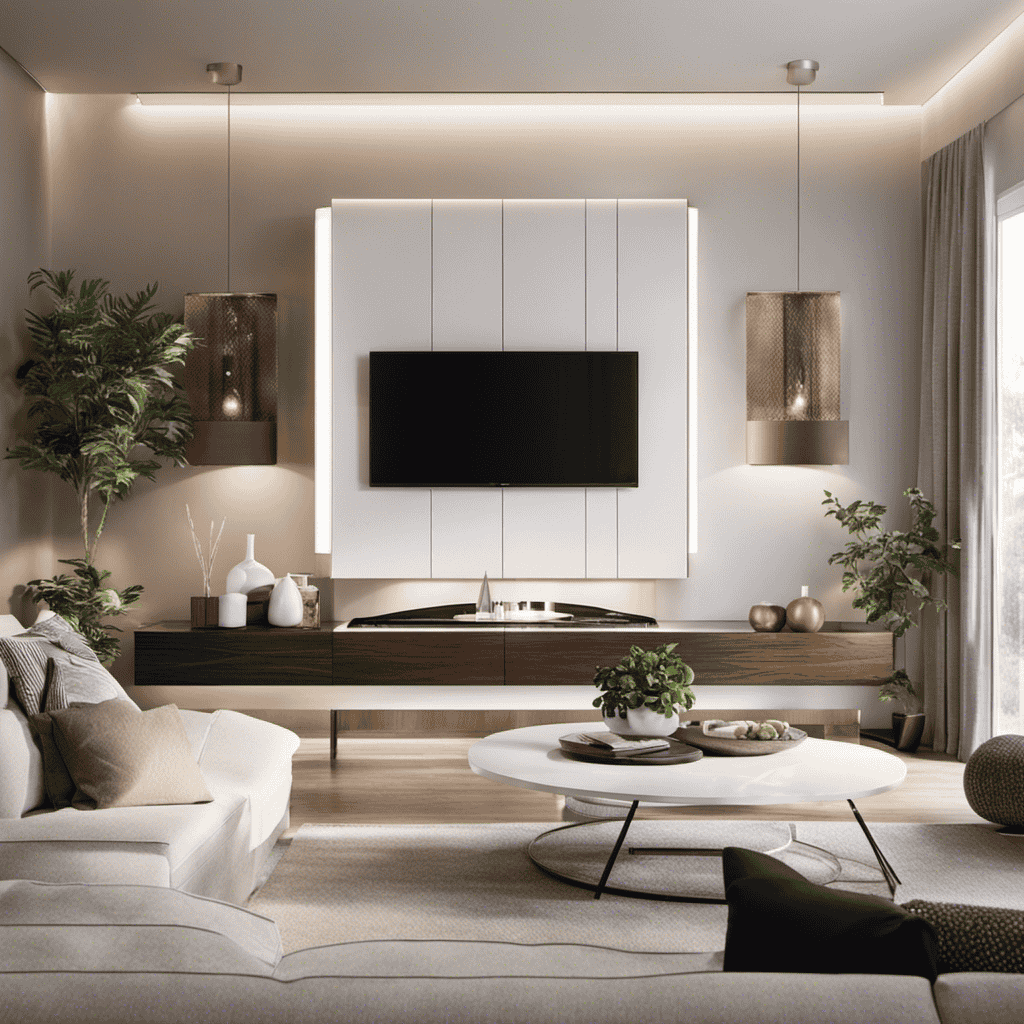
I have always been curious about whether running my air purifier nonstop every day would actually have an impact. After doing some research, I was surprised by the results. It appears that there are some convincing arguments for running your air purifier around the clock.
From improving indoor air quality to reducing the risk of respiratory issues, continuous air purification offers a range of health benefits. Plus, it can enhance sleep quality and even save you money in the long run.
Let’s dive deeper into the science behind it all.
Key Takeaways
- Improved indoor air quality
- Reduced risk of allergies and respiratory issues
- Enhanced sleep quality
- Boosted immune system function
Health Benefits of Running Your Air Purifier 24/7
Running your air purifier 24/7 can greatly improve the air quality in your home, reducing the risk of allergies and respiratory issues. Regular air purifier maintenance is essential to ensure that it functions optimally and continues to provide you with clean air.
By constantly circulating and filtering the air, an air purifier can remove harmful particles such as dust, pollen, pet dander, and mold spores. This is especially beneficial for those with allergies or asthma, as it helps to alleviate symptoms and promote better respiratory health.
Additionally, clean air is important for everyone’s overall well-being. Breathing in clean air can improve sleep quality, enhance cognitive function, and boost immune system function.
Improved Indoor Air Quality With Continuous Air Purification
Constantly clean air is essential for maintaining a healthy indoor environment. With continuous air purification, you can ensure that the air you breathe is free from pollutants and allergens.
This not only improves the quality of the air you breathe but also provides numerous health benefits. For example, it reduces the risk of respiratory issues and allergies.
Constantly Clean Air
You should keep your air purifier on all the time to ensure that the air in your home is always clean. Running your air purifier continuously offers several benefits, including improved indoor air quality and a healthier living environment. Here’s why you should consider running your air purifier 24/7:
-
Energy Consumption: Most modern air purifiers are designed to be energy-efficient. They consume minimal electricity, so you don’t have to worry about high energy bills.
-
Noise Level: Air purifiers are designed to operate quietly, allowing you to enjoy a peaceful environment while still benefiting from clean air.
-
Constantly Clean Air: By running your air purifier all the time, you can maintain a consistent level of air purification, ensuring that pollutants, allergens, and other harmful particles are constantly being removed.
With these factors in mind, it’s clear that running your air purifier continuously is a smart choice for maintaining cleaner and healthier indoor air. In addition to the benefits mentioned, continuous purification also offers various health benefits that we will explore in the next section.
Health Benefits of Continuous Purification
By keeping your air purifier on all the time, you’ll experience improved indoor air quality and enjoy the health benefits of continuous purification. Running your air purifier 24/7 can have a positive impact on your immune system and help reduce allergies.
Air purifiers work by removing airborne particles such as dust, pollen, pet dander, and mold spores from the air, which can trigger allergies and respiratory issues. By continuously purifying the air, your immune system is less likely to be overwhelmed by these allergens, resulting in improved overall health.
Additionally, air purifiers can also help reduce the spread of airborne viruses and bacteria, further supporting your immune system. So, if you want to improve your immune system and reduce allergies, keeping your air purifier on all the time is a wise decision.
Eliminating Allergens and Pollutants Around the Clock
Running my air purifier all day helps to eliminate allergens and pollutants from my home. Here are three ways it improves my overall well-being and reduces allergy symptoms:
-
Cleaner Air: With the air purifier constantly running, it filters out dust, pet dander, pollen, and other airborne particles that trigger allergies. This ensures that the air I breathe is clean and free from allergens.
-
Improved Sleep: By removing irritants from the air, the air purifier helps me sleep better at night. I wake up feeling refreshed and with fewer allergy symptoms, such as congestion or sneezing.
-
Reduced Asthma Triggers: Asthma sufferers like me benefit greatly from running an air purifier 24/7. It removes asthma triggers like mold spores and volatile organic compounds (VOCs), creating a healthier indoor environment.
The Importance of Consistent Air Filtration
Continuous air purification is essential for maintaining a healthy indoor environment. With consistent filtration, we can effectively remove pollutants and allergens from the air, reducing the risk of respiratory issues and other health problems.
Continuous Air Purification
There’s no need to worry about turning off your air purifier because it continuously cleans the air in your home. Here are three benefits of round the clock filtration:
-
Improved Indoor Air Quality: By running your air purifier 24/7, you ensure that the air in your home is constantly being purified. This helps remove harmful pollutants such as dust, pollen, pet dander, and mold spores, leading to cleaner and healthier air for you and your family.
-
Allergen Control: Continuous air purification helps reduce allergens in your home. It can effectively capture and eliminate common allergens, such as pollen and dust mites, providing relief for allergy sufferers.
-
Odor Elimination: Running your air purifier nonstop helps eliminate unpleasant odors, such as cooking smells, pet odors, and tobacco smoke. It can neutralize these odors by trapping and absorbing the particles that cause them.
By keeping your air purifier running constantly, you can enjoy the continuous benefits of clean and fresh air in your home, which can have a positive impact on your overall health and well-being.
In the next section, we will explore the specific health benefits of filtration.
Health Benefits of Filtration
By keeping your air purifier on all the time, you can experience the health benefits of cleaner air in your home. Air purifiers work by filtering out pollutants and contaminants from the air, ensuring that the air you breathe is cleaner and healthier. The filtration process traps particulate matter such as dust, pollen, pet dander, and even bacteria and viruses, reducing the risk of respiratory issues and allergies. Continuous operation of the air purifier ensures that the filtration system is constantly working to remove these harmful particles from the air.
This can lead to improved indoor air quality, reduced symptoms of allergies and asthma, and a healthier living environment overall. So, don’t hesitate to keep your air purifier running all the time to enjoy the full benefits of cleaner air in your home.
Reducing Indoor Air Pollution
To effectively reduce indoor air pollution, it’s important to regularly clean and maintain your air purifier. Here are three key reasons why this is crucial for improving respiratory health and reducing asthma triggers:
-
Efficient Filtration: A clean air purifier can effectively capture and remove airborne particles, such as dust, pet dander, and pollen, which are common triggers for respiratory issues and asthma attacks.
-
Preventing Recirculation: Regular maintenance ensures that the filters in your air purifier are functioning optimally. This prevents the recirculation of pollutants back into the air, keeping the indoor environment cleaner and healthier.
-
Promoting Better Air Quality: By regularly cleaning and maintaining your air purifier, you can enhance its overall performance, allowing it to efficiently clean the air and maintain a higher level of indoor air quality. This can significantly improve respiratory health and reduce asthma triggers for you and your family.
Reducing the Risk of Respiratory Issues by Running Your Air Purifier 24/7
Running your air purifier 24/7 can help you reduce the risk of respiratory issues. Indoor air pollution contains various harmful particles such as dust, pollen, pet dander, and volatile organic compounds (VOCs) that can trigger allergies and respiratory conditions like asthma. By continuously purifying the air, an air purifier can effectively remove these pollutants, providing cleaner and healthier air to breathe. This can lead to improved cognitive function and reduced asthma symptoms.
The constant filtration of the air helps to remove allergens and irritants, promoting better respiratory health. By reducing the risk of respiratory issues, running your air purifier round-the-clock can greatly benefit your overall well-being.
Additionally, enhancing sleep quality with round-the-clock air purification can further improve your health and well-being.
Enhancing Sleep Quality With Round-The-Clock Air Purification
Enhancing sleep quality can be achieved by using an air purifier that operates 24/7. Here are three ways in which running an air purifier round-the-clock can contribute to better sleep and improved well-being:
-
Reduced allergens: An air purifier filters out common allergens like pollen, dust mites, and pet dander, ensuring cleaner air in your bedroom. This can help alleviate allergy symptoms, such as sneezing, congestion, and itchy eyes, which can disrupt sleep.
-
Elimination of odors: Air purifiers with activated carbon filters can effectively remove unpleasant odors from the air, such as cooking smells or cigarette smoke. By eliminating these odors, you can create a more pleasant sleeping environment, promoting relaxation and better sleep.
-
Improved air quality: Air purifiers remove pollutants such as volatile organic compounds (VOCs) and airborne particles, creating cleaner and fresher air to breathe. This can lead to a healthier sleep environment, reducing the risk of respiratory issues and promoting overall well-being.
Energy Efficiency and Cost Savings With 24/7 Air Purifier Usage
By operating an air purifier round-the-clock, you can save on energy and reduce costs. Running an air purifier continuously may seem counterintuitive when it comes to energy savings, but it can actually be more efficient in the long run. Modern air purifiers are designed to be energy-efficient, and running them continuously helps maintain a consistently clean and healthy indoor environment. The energy consumption of an air purifier depends on factors such as the size of the room and the air quality, but most models have low power consumption. Additionally, running an air purifier 24/7 can help reduce the environmental impact by improving indoor air quality and reducing the need for other energy-consuming devices like fans or dehumidifiers.
Here is a table showcasing the potential energy savings and environmental impact of running an air purifier round-the-clock:
| Energy Savings | Environmental Impact |
|---|---|
| Reduced need for other devices | Improved indoor air quality |
| Lower power consumption | Reduced use of fans and dehumidifiers |
| Consistent clean air | Decreased pollutants in the air |
Overall, operating an air purifier continuously can lead to energy savings and a positive environmental impact.
Conclusion
In conclusion, running your air purifier 24/7 is like having a guardian angel for your indoor air quality. It tirelessly fights off allergens and pollutants, giving you a breath of fresh air day and night.
With consistent air filtration, the risk of respiratory issues is greatly reduced, allowing you to breathe easy. Not only does it improve your health, but it enhances your sleep quality as well.
And the best part? It’s energy efficient and saves you money. So why wait? Let your air purifier be your constant protector, purifying the air around you non-stop.
At Aero Guardians, where every piece of information aims to make the world a breath fresher, Samuela’s role as an author has been nothing short of transformative. With a penchant for weaving stories around the science of air purification, Samuela has enriched the platform with content that is both enlightening and captivating.
FAQs - Advanced Queries
Why Is the Air Purifier so Noisy
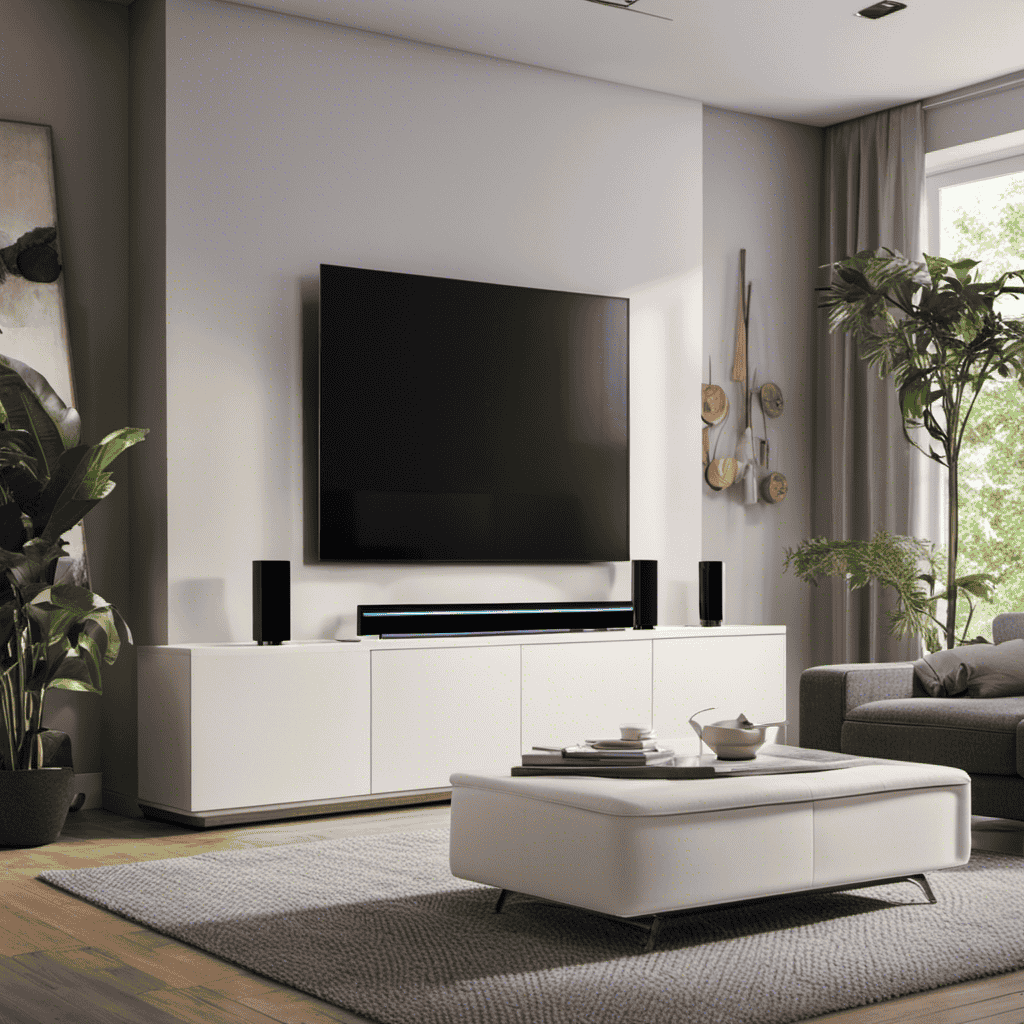
As someone who frequently uses air purifiers, I am constantly bothered by the loud noise they generate. It feels like a small tornado has made its home in my living room.
This article delves into the various causes behind the seemingly relentless racket of air purifiers. By examining factors such as fan noise, motor malfunctions, filter maintenance, and airflow, we aim to shed light on why these devices can be as disruptive as they are beneficial.
Additionally, we will explore practical tips for minimizing the noise and maximizing the peace in our homes.
Key Takeaways
- Dirty or clogged filters restrict airflow and cause the fan to work harder, resulting in more noise.
- Motor speed directly affects fan noise, with higher speeds producing louder noise levels.
- Motor malfunctions such as worn-out bearings or damaged fan blades can lead to increased noise levels.
- Regular filter cleaning and replacement, as well as proper maintenance of the motor, can help reduce noise in air purifiers.
Common Causes of Noisy Air Purifiers
One of the most common causes of noisy air purifiers is a dirty or clogged filter. When the filter becomes dirty, it restricts the flow of air through the purifier, causing the fan to work harder and generate more noise.
To prevent this issue, it’s crucial to regularly clean or replace the filter according to the manufacturer’s instructions.
Another factor that can contribute to noise is the fan speed. Higher fan speeds generally produce more noise due to the increased airflow. Understanding the fan speed settings and adjusting them accordingly can help minimize noise levels while still maintaining optimal air purification.
Additionally, noise reduction techniques such as sound insulation materials or placing the purifier on a stable surface can effectively reduce unwanted noise.
Understanding Fan Noise in Air Purifiers
To better understand the fan noise in air purifiers, it’s helpful to consider factors such as motor speed and blade design. The motor noise is directly related to the fan speed, with higher speeds generally resulting in louder noise levels. Additionally, the design of the fan blades can impact the noise produced. Blades with a more streamlined shape and optimized pitch can reduce turbulence and minimize noise. Other factors that contribute to fan noise include the quality of the motor bearings, the presence of vibration dampening mechanisms, and the overall construction of the air purifier housing.
By taking all these factors into account, manufacturers can create air purifiers that deliver effective purification while minimizing fan noise.
Transitioning into the subsequent section about ‘motor malfunctions and noise levels’, it’s important to note that even with proper design and maintenance, motors can sometimes malfunction, leading to increased noise levels.
Motor Malfunctions and Noise Levels
When motors malfunction, the noise levels can become noticeably louder. Motor malfunction effects vary depending on the specific issue, but common problems include worn-out bearings, loose components, or damaged fan blades. These issues can lead to excessive vibrations and increased noise levels.
To minimize the noise caused by motor malfunctions, several noise reduction methods can be implemented. One approach is to use vibration isolators or dampeners to absorb and reduce the vibrations produced by the malfunctioning motor.
Additionally, regular maintenance and inspection of the motor can help identify and address any potential issues before they escalate and cause increased noise levels.
Lastly, replacing worn-out or damaged components, such as fan blades or bearings, can also help restore the motor’s functionality and reduce noise.
How Filter Maintenance Affects Noise Levels
Dirty filters can significantly increase the noise levels of an air purifier. When the filter becomes clogged with dust and debris, it obstructs the airflow, forcing the motor to work harder and produce more noise.
Regular filter cleaning is crucial to maintain optimal performance and reduce noise levels in the long run. Additionally, replacing the filter when necessary can further minimize noise by ensuring proper air circulation and preventing the motor from overworking.
Dirty Filters Increase Noise
You can reduce the noise of your air purifier by cleaning or replacing the filters regularly. Dirty filters can cause the fan speed to increase, leading to louder operation.
Here are some noise reduction techniques to consider:
- Clean or replace filters every 3-6 months to maintain optimal performance.
- Use high-quality filters that are specifically designed for noise reduction.
- Place the air purifier on a stable surface to minimize vibrations and rattling sounds.
- Keep the air purifier away from walls or other objects that may obstruct airflow.
- Consider using a lower fan speed setting, as higher speeds tend to generate more noise.
Regular Filter Cleaning
To maintain optimal performance, it’s important to regularly clean or replace your air purifier filters. This is especially crucial for reducing noise levels and ensuring a quieter operation.
When the filters become dirty or clogged, the fan has to work harder to draw in air, resulting in increased noise. By regularly cleaning the filters, you can prevent this buildup and maintain efficient airflow.
Start by turning off the purifier and removing the filters. Use a vacuum cleaner or a soft brush to gently remove dust and debris from the filters and the fan blades. Make sure to follow the manufacturer’s instructions for proper cleaning techniques.
Regular filter cleaning not only improves air quality but also reduces noise, creating a more peaceful environment in your home.
Filter Replacement Reduces Noise
Replacing your filters regularly can greatly reduce the noise levels emitted by your air purifier. When filters become clogged with dust and debris, the air purifier has to work harder to pull air through, resulting in increased noise. By replacing filters on a regular basis, you can maintain optimal airflow and minimize noise.
Here are some benefits of filter replacement for noise reduction:
-
Improved air circulation: Clean filters allow for better airflow, reducing strain on the air purifier and decreasing noise.
-
Enhanced efficiency: New filters ensure that the air purifier is operating at maximum efficiency, reducing noise caused by inefficiencies.
-
Reduced motor wear and tear: With clean filters, the motor doesn’t have to work as hard, leading to quieter operation.
-
Longer lifespan: Regular filter replacement prolongs the lifespan of your air purifier, reducing the likelihood of noise-related issues.
-
Enhanced air quality: Fresh filters remove more contaminants, allowing the air purifier to operate more quietly while maintaining clean air.
The Impact of Airflow and Noise
When the air purifier is operating at high airflow levels, it can become noisy and potentially disrupt your daily activities. This is because the increased airflow generates more noise as it moves through the purifier’s components. To address this issue, manufacturers focus on improving airflow efficiency and implementing noise reduction techniques. By optimizing the design and placement of the internal components, they can reduce turbulence and minimize vibrations that contribute to noise. Additionally, advanced sound insulation materials are used to absorb and dampen the noise generated during operation. These efforts result in quieter air purifiers that provide effective purification without causing excessive noise pollution. In the table below, I have summarized some common noise reduction techniques used in air purifiers:
| Noise Reduction Techniques |
|---|
| Design optimization |
| Component placement |
| Sound insulation materials |
| Vibration damping |
| Noise-absorbing filters |
Tips for Reducing Noise From Your Air Purifier
When it comes to air purifiers, one of the biggest concerns for users is the noise level. In this discussion, I will explore various noise-reducing techniques that can be implemented to minimize the disturbance caused by air purifiers.
Additionally, I will delve into the concept of silent air purifiers and their effectiveness in providing a quiet and peaceful environment.
Noise-Reducing Techniques
To reduce the noise of your air purifier, try adjusting the fan speed or placing it on a soft surface. These simple steps can significantly decrease the noise produced by your device.
However, if you’re looking for more advanced solutions, there are noise reducing technologies and soundproofing techniques available. Consider the following options:
- Noise reducing technology: Some air purifiers come equipped with advanced noise reduction features, such as vibration isolation pads or sound-absorbing materials.
- Soundproofing techniques: You can soundproof the area around your air purifier by using soundproof curtains, acoustic panels, or even a white noise machine to mask the noise.
By implementing these techniques, you can create a quieter environment while still enjoying the benefits of clean air.
Now, let’s explore the next section about silent air purifiers and how they can further minimize noise.
Silent Air Purifiers
Silent air purifiers offer a noise-free solution for those seeking a quieter environment. These innovative devices utilize advanced noise-reducing technologies to ensure a peaceful atmosphere without compromising on air quality. By employing cutting-edge engineering and design, silent air purifiers effectively remove airborne pollutants while operating silently in the background.
One of the key features of silent air purifiers is their incorporation of noise reducing technologies. These technologies include sound-dampening materials, advanced fan designs, and vibration isolation systems. By minimizing the noise generated by the purifier’s components, these devices create a more serene environment for users.
To illustrate the effectiveness of silent air purifiers, let’s take a look at the following table showcasing some popular models and their noise levels:
| Model | Noise Level (dB) | Coverage Area (sq. ft.) |
|---|---|---|
| A | 25 | 300 |
| B | 30 | 500 |
| C | 35 | 800 |
| D | 40 | 1000 |
As you can see, these silent air purifiers operate at low noise levels, allowing you to enjoy cleaner air without the distractions of loud machinery. Whether it’s for your bedroom, office, or any other space, silent air purifiers provide a peaceful environment while effectively improving indoor air quality.
Noise Level Comparison
These innovative devices offer a quieter environment by incorporating noise-reducing technologies. When comparing noise levels of different air purifiers, it is important to consider the following factors:
- Sound insulation: Some air purifiers are designed with special materials that help absorb and reduce noise.
- Fan speed control: A silent air purifier brand may offer multiple fan speed settings, allowing you to adjust the noise level according to your preference.
- Filter design: Certain air purifiers use advanced filter designs that optimize airflow while minimizing noise.
- Vibration reduction: Manufacturers may incorporate vibration-dampening technologies to reduce noise caused by motor vibrations.
- Smart features: Some air purifiers come with smart sensors that detect the air quality and adjust the fan speed accordingly, resulting in a quieter operation.
Frequently Asked Questions
Can Noisy Air Purifiers Affect My Sleep Quality?
Noisy air purifiers can negatively impact sleep quality. Excessive noise can disrupt sleep patterns, leading to poor sleep and overall health issues. To reduce noise, consider placing the purifier in a separate room or using a quieter model.
Can Air Purifiers Make My Allergies Worse Due to the Noise They Produce?
Yes, air purifiers can potentially cause hearing damage due to their high noise levels. However, there are ways to reduce the noise without compromising effectiveness, such as using noise-cancelling technology or placing the purifier in a soundproofed area.
Are There Any Specific Brands or Models of Air Purifiers That Are Known for Being Quieter?
Quiet air purifiers can be found in various brands and models. Noise reduction techniques, such as sound insulation and fan design, are employed to minimize noise. These advancements ensure a peaceful environment while maintaining effective air purification.
Can I Use My Air Purifier in a Bedroom or Office Without Disturbing Others With the Noise?
I can use my air purifier in a bedroom or office without disturbing others with the noise. By selecting a model with lower air purifier noise levels and implementing tips for reducing noise, such as placing it on a stable surface and cleaning the filters regularly.
How Can I Tell if the Noise Coming From My Air Purifier Is Normal or if There Is a Malfunction?
To determine if the noise from my air purifier is normal or a malfunction, I can follow these troubleshooting tips: check for loose parts, clean or replace filters, and ensure proper placement and ventilation.
Conclusion
In conclusion, noisy air purifiers can be attributed to various factors. These factors include fan noise, motor malfunctions, and filter maintenance. The airflow and noise levels are directly linked, impacting the overall noise produced by the device.
To reduce noise, consider cleaning or replacing filters regularly. Additionally, ensure proper maintenance of the motor. Just like a well-tuned engine purrs smoothly, a well-maintained air purifier operates silently. This allows you to enjoy clean and fresh air without any disruptions.
So, take care of your air purifier, and it will take care of you.
In the dynamic world of air purifiers and clean air advocacy, Aire stands out as a beacon of knowledge and passion. As the Editor in Chief of Aero Guardians, Aire has been instrumental in shaping the platform’s voice and direction, ensuring that every piece of content resonates with clarity, authority, and authenticity.
-

 Air Purifier Guides8 months ago
Air Purifier Guides8 months agoHow to Reset Filter on Miko Air Purifier
-
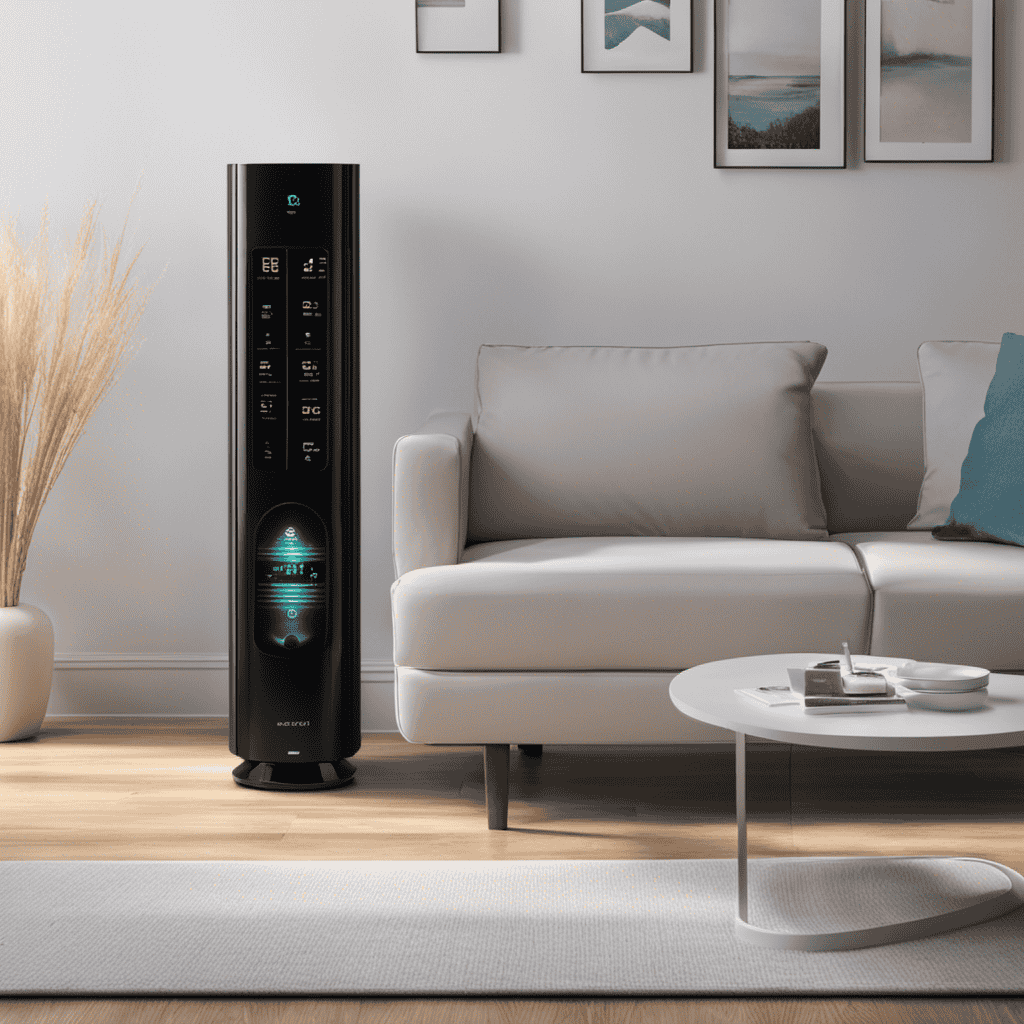
 FAQs - Advanced Queries5 months ago
FAQs - Advanced Queries5 months agoWhat Do the Numbers on My Air Purifier Mean
-

 Air Purifier Guides6 months ago
Air Purifier Guides6 months agoHow to Make a Homemade Ozone Generator (Air Purifier
-
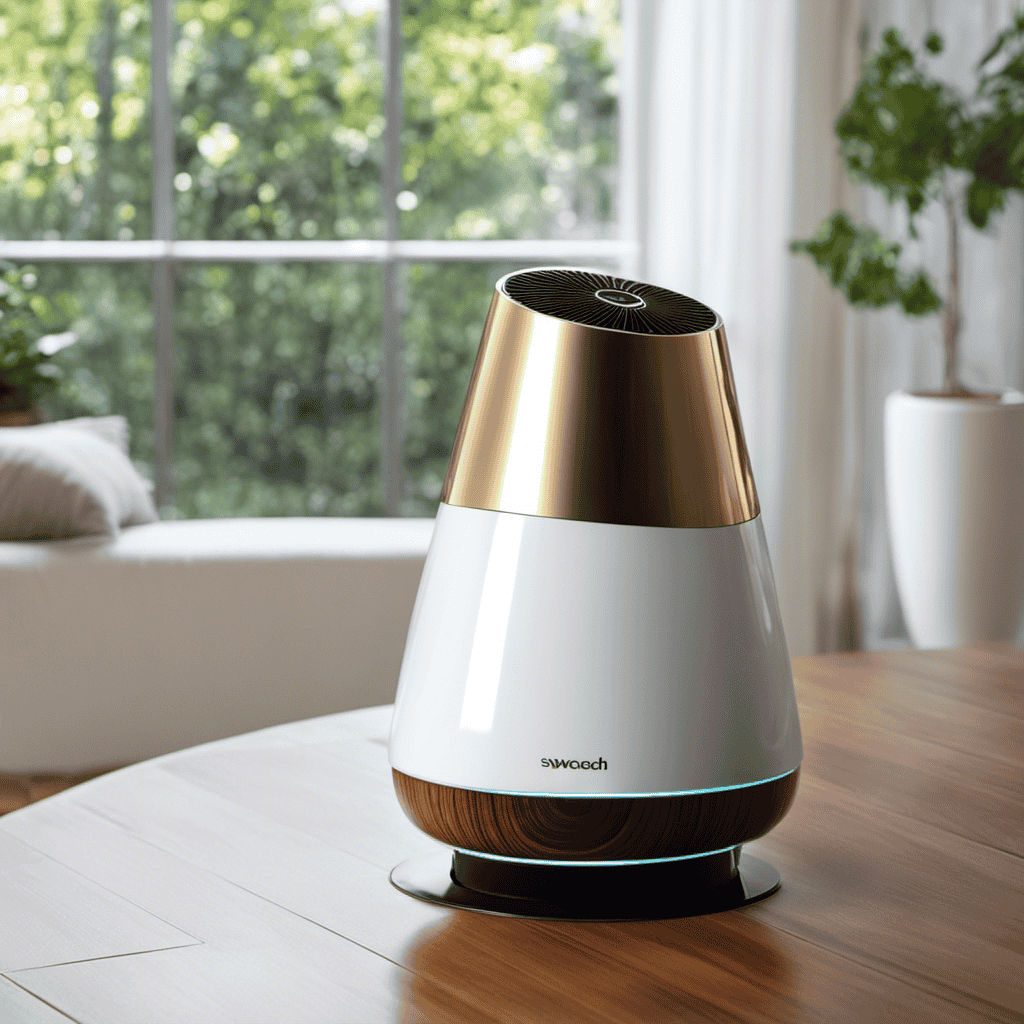
 Types of Air Purifiers9 months ago
Types of Air Purifiers9 months agoWhat Is an Air Purifier
-

 Vetted7 months ago
Vetted7 months agoAera Mini Review: Smart Home Fragrance Diffuser With Hypoallergenic Scent Technology (2023)
-
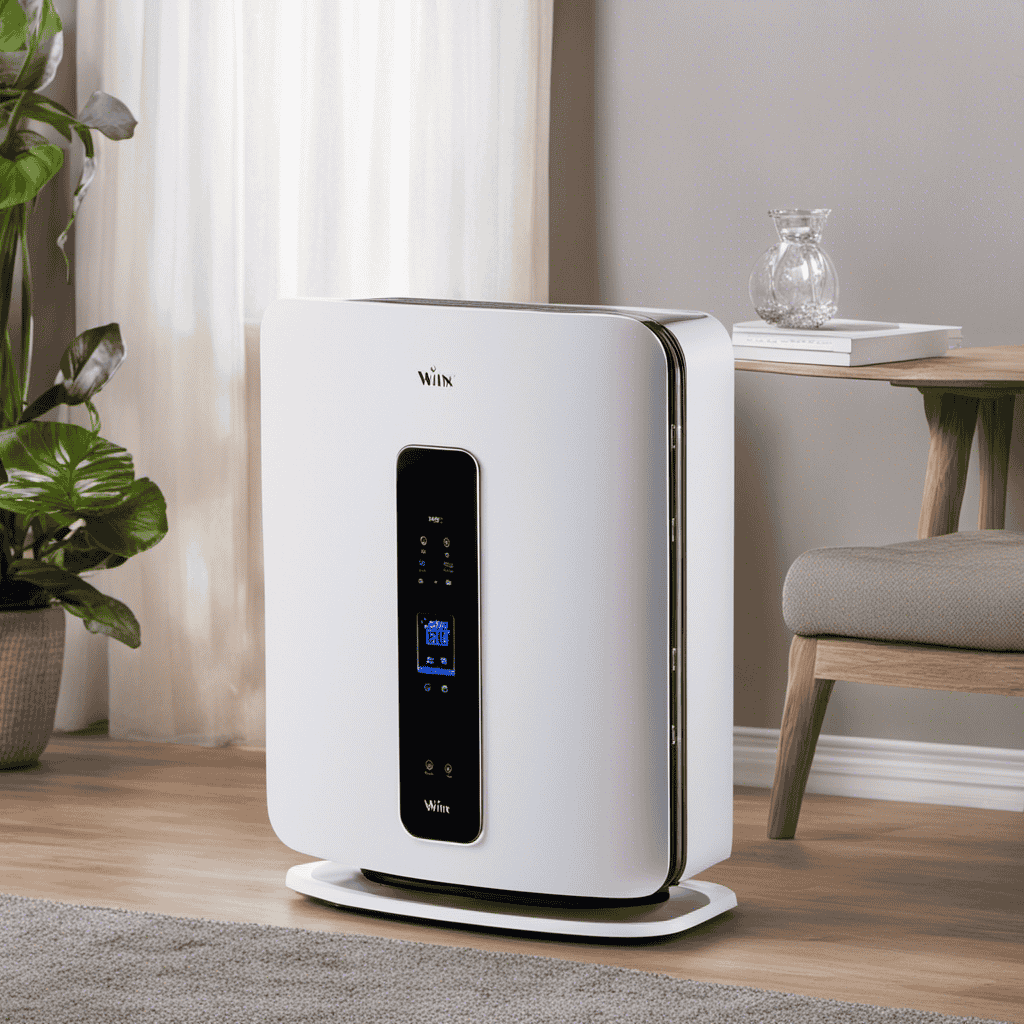
 Maintenance and Tips10 months ago
Maintenance and Tips10 months agoHow to Reset Filter Light on Winix Plasmawave Air Purifier
-
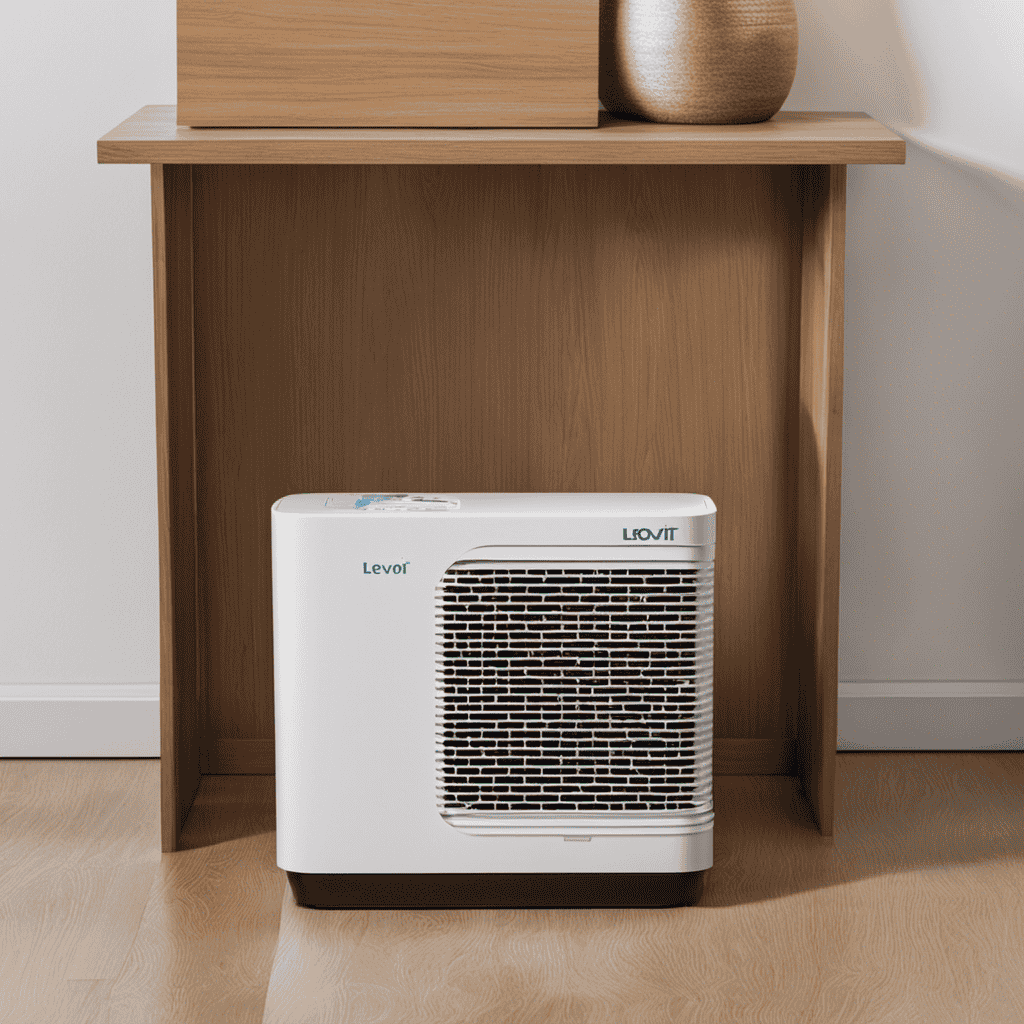
 Air Purifier Guides4 days ago
Air Purifier Guides4 days agoHow to Dispose of Air Purifier Filter Levoit
-

 FAQs - Advanced Queries3 weeks ago
FAQs - Advanced Queries3 weeks agoWhen to Use Ionizer on Coway Air Purifier






